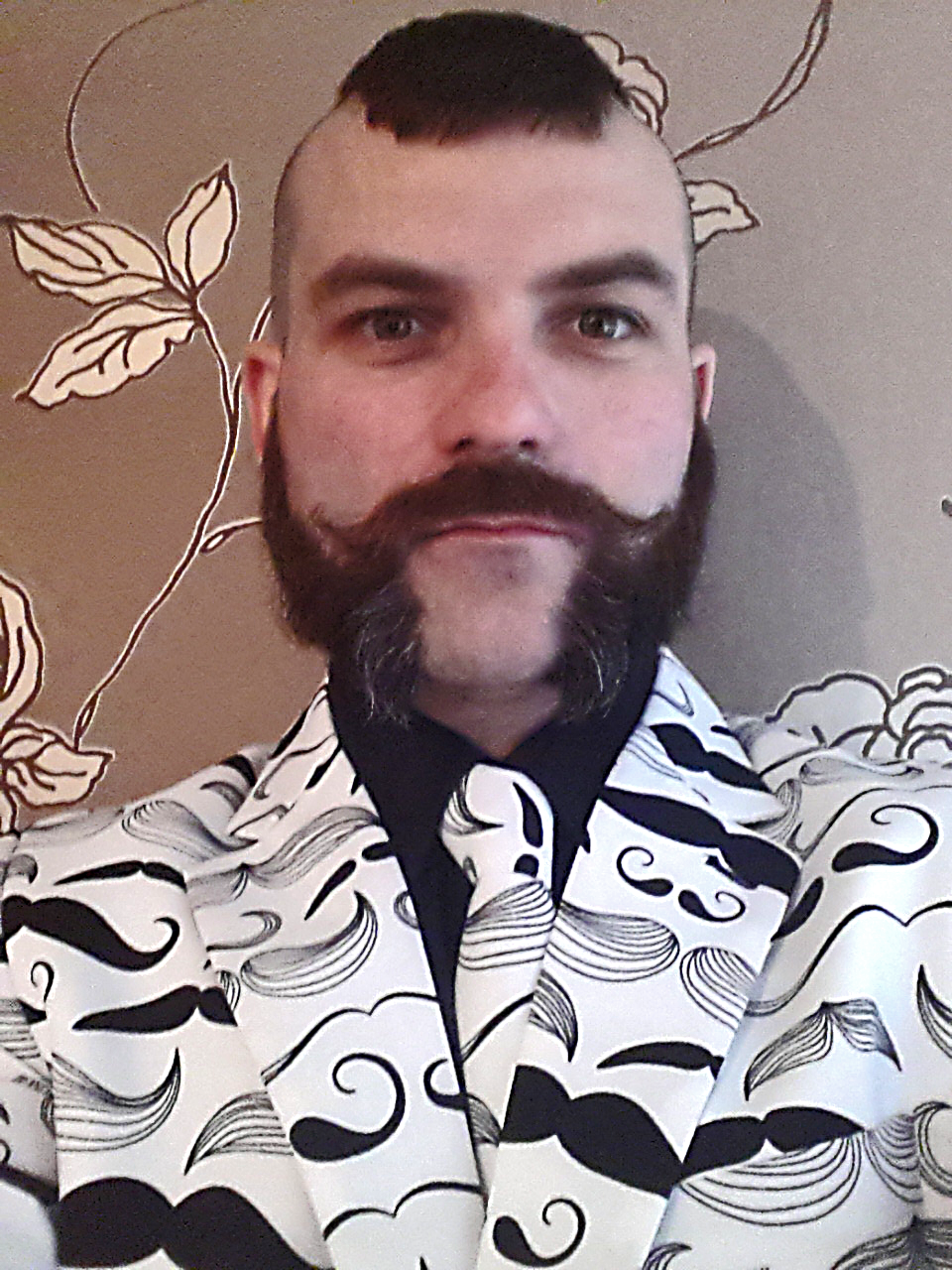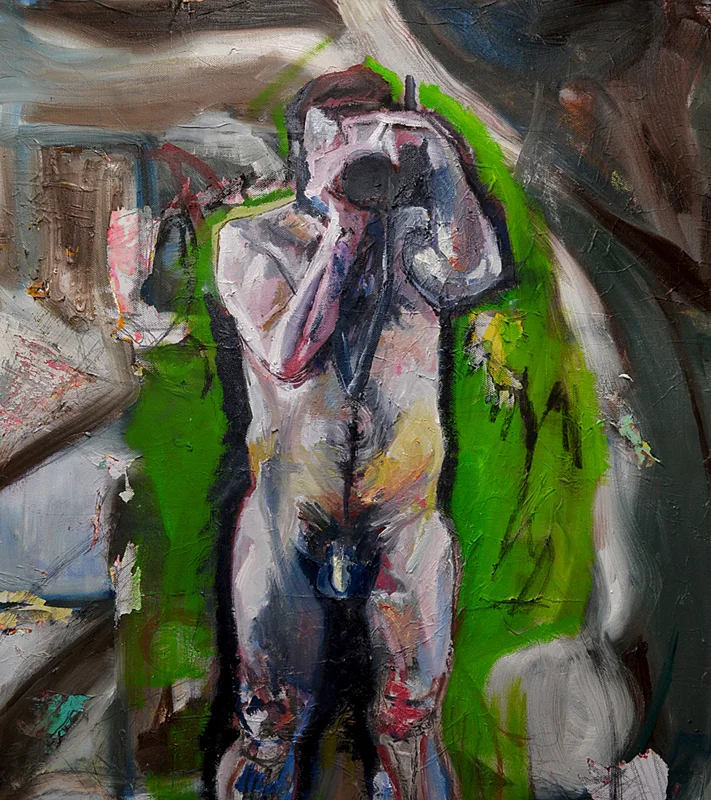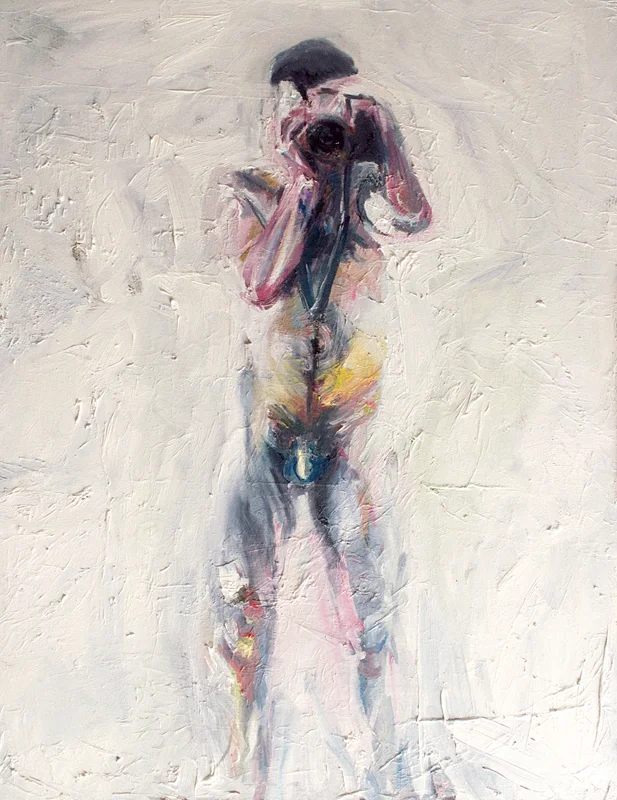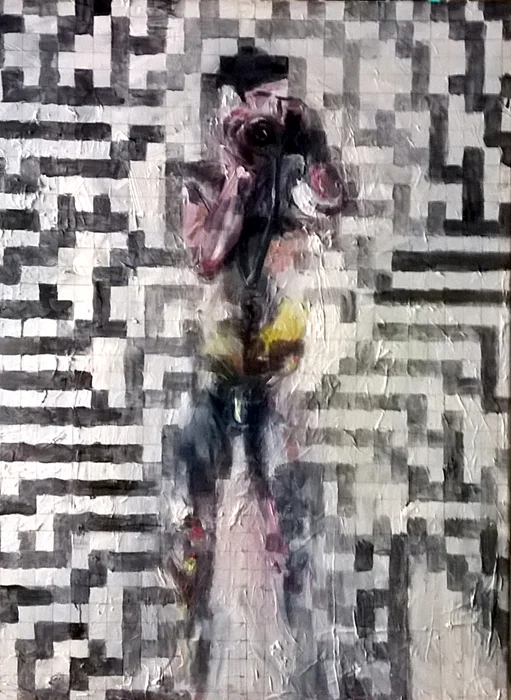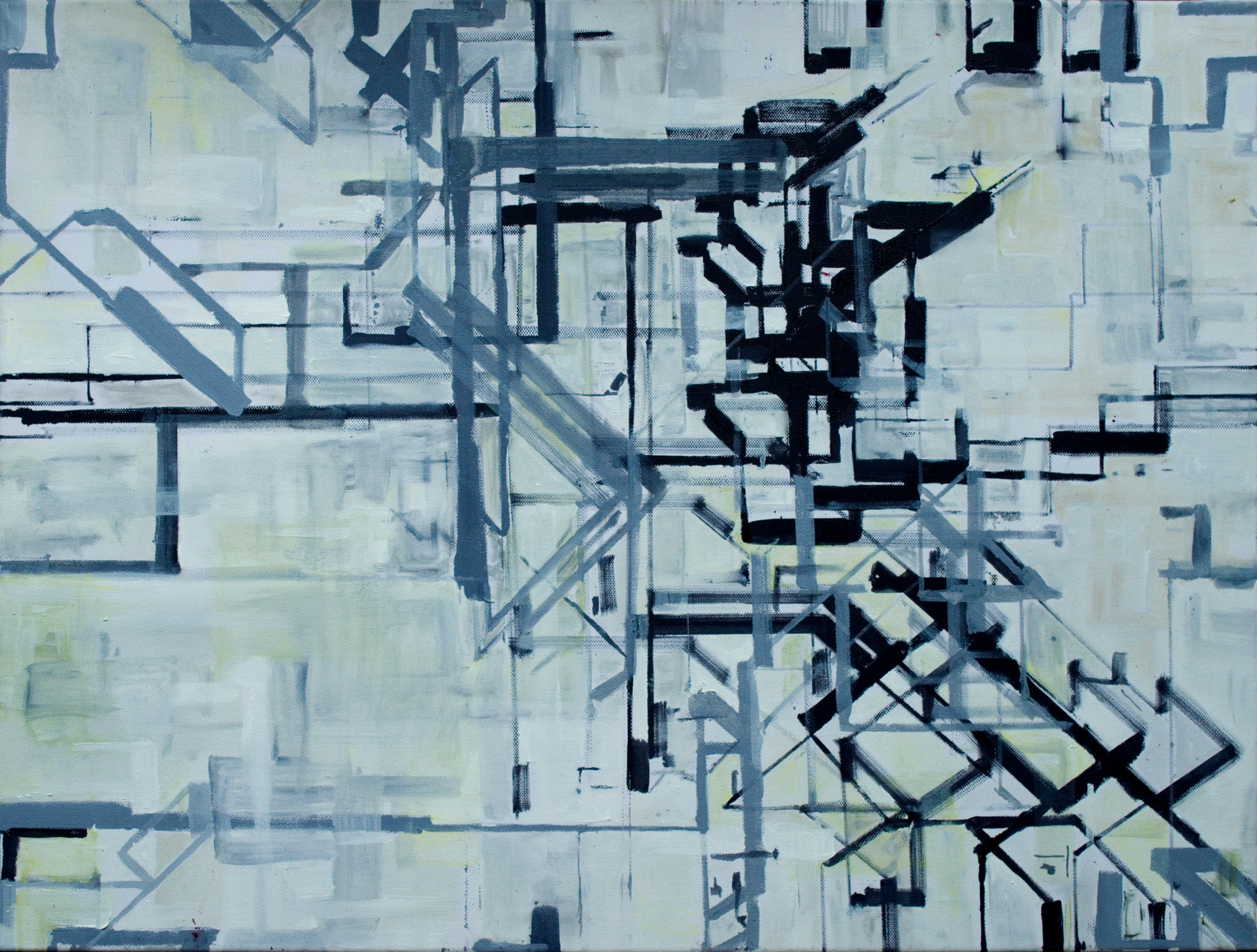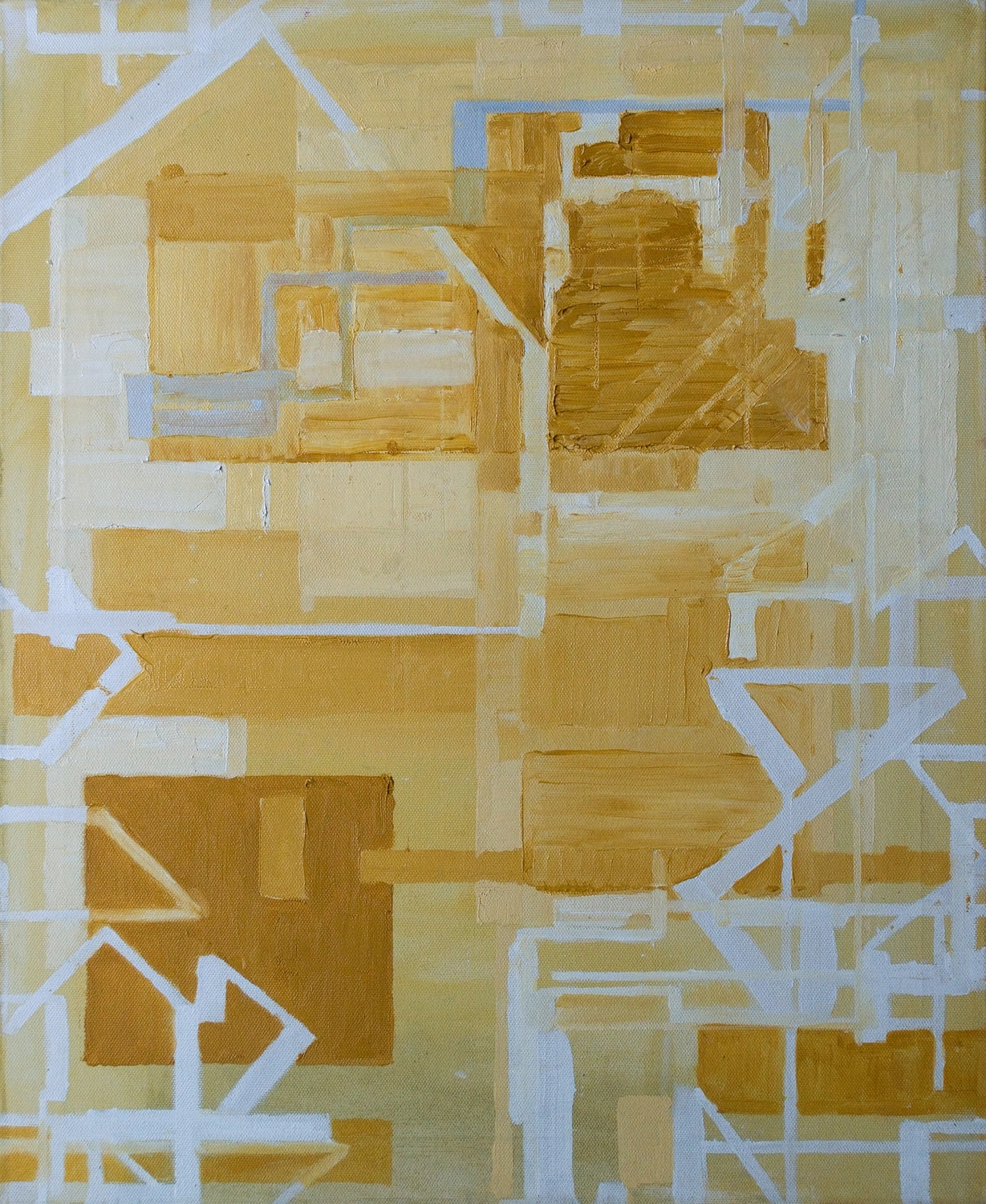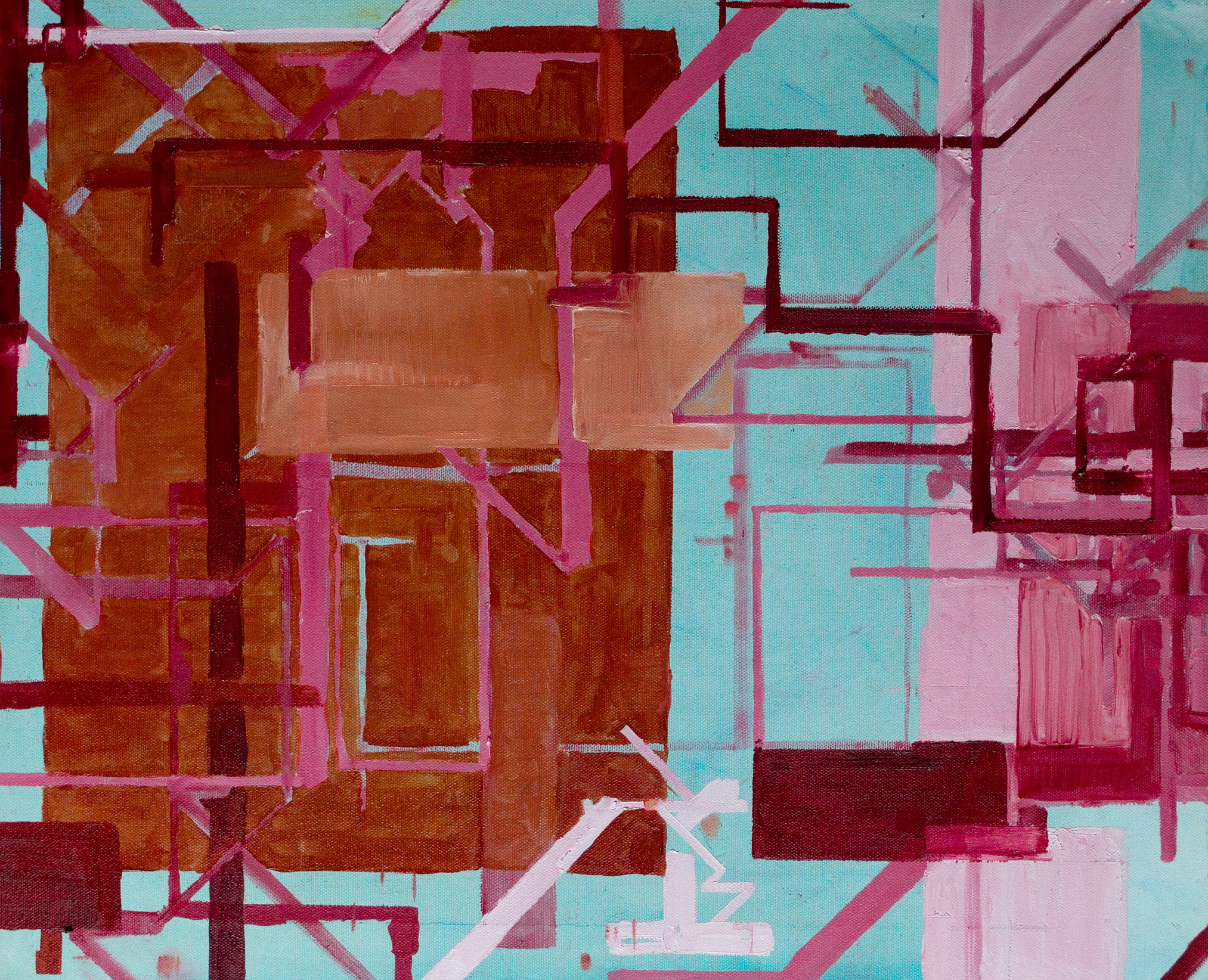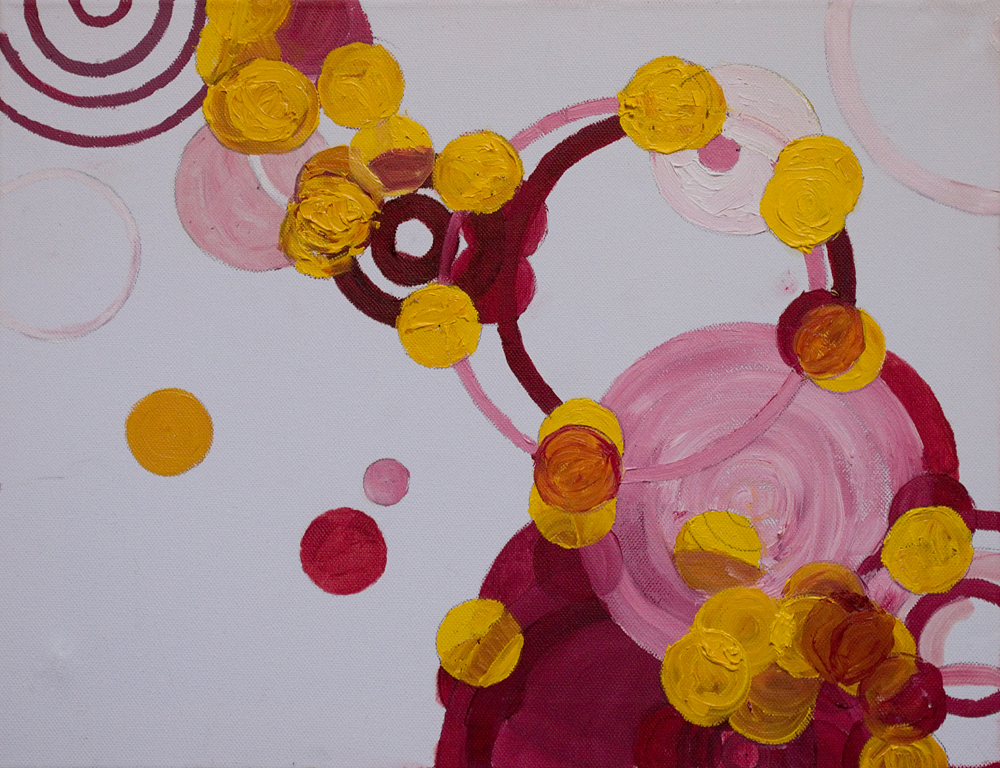Where to start? The beginning is so far away . I'm not even sure if I'm near the middle or past the point of no return. ( What ever that cliché means in this context.) My work is disparate and wide reaching. I sometimes feel if I'm looking for the Grand Unifying Theory for my mind.
The best I can do is try to give you some insight into my thoughts as I paint. The image below is a difficult one for me, purely from a bashful point of view. The subject is yours truly with a camera. Originally my ideas for this work revolved around :
- The use of the female form in nudes.
I wanted to do something that scared me as, I was creatively a bit dry.
I wanted to improve my technical skills by studying the figure.
These ideas kick started the painting,but as I painted my focus shifted to embarrassment. I would be laying my every bump, lump and fold bare on the net for all to see and the thought twisted my gut with dread. My reddened cheeks acted like a rag to a bull. The work had now become a challenge to be over come, to be braved.
Along side these thought 's I found myself justifying my own physicality in a way I never had before. I forced myself to think of myself as meat and paint, this took my mind off the embarrassed anxiety I was experiencing. I will admit that I my mind was split, part was worrying over how people would judge me by the size of my cock. Typing that feels both wrong and liberating. Ha.
Reducing myself worth to the dimensions of my penis was an odd feeling. Day to day my penis rarely features – excepting the showers and toilet breaks, but I digress. There was a terrific almost exhilarating and frustrating cognitive dissonance in my head.
Some time after posting the image, incomplete as it was I was diagnosed with mild depression and sever anxiety. To express my loss of self, I used a reverse chiaroscuro effect. This worked to an extent but the painting still begged to be finished. And so it sat in the Cave O' Paint, haunting me ( and the occasional meter reader from the gas board. )
The use of cellular automata is the latest addition to the painting. The rule used is Rule 30. Unlike some cellular automata rules, Rule 30 will not 'die' . It is a random and infinite rule set. I'm still digesting the effect of the generative cellular automata on the work. But my thoughts have turned to the dispersal of personality in the digital age. There is a sense of dissolution and corroding of information in the work. As for the camera, it was always meant to represent a voyeur. I no longer think of the figure in the image as myself , I think it has become to laden with symbolism.
I'm interested in what the painting says to other people, what they read into it. If you feel moved to comment on the work then please do. I'm still not finished the painting, but it definitely feels closer to the end than the beginning.
